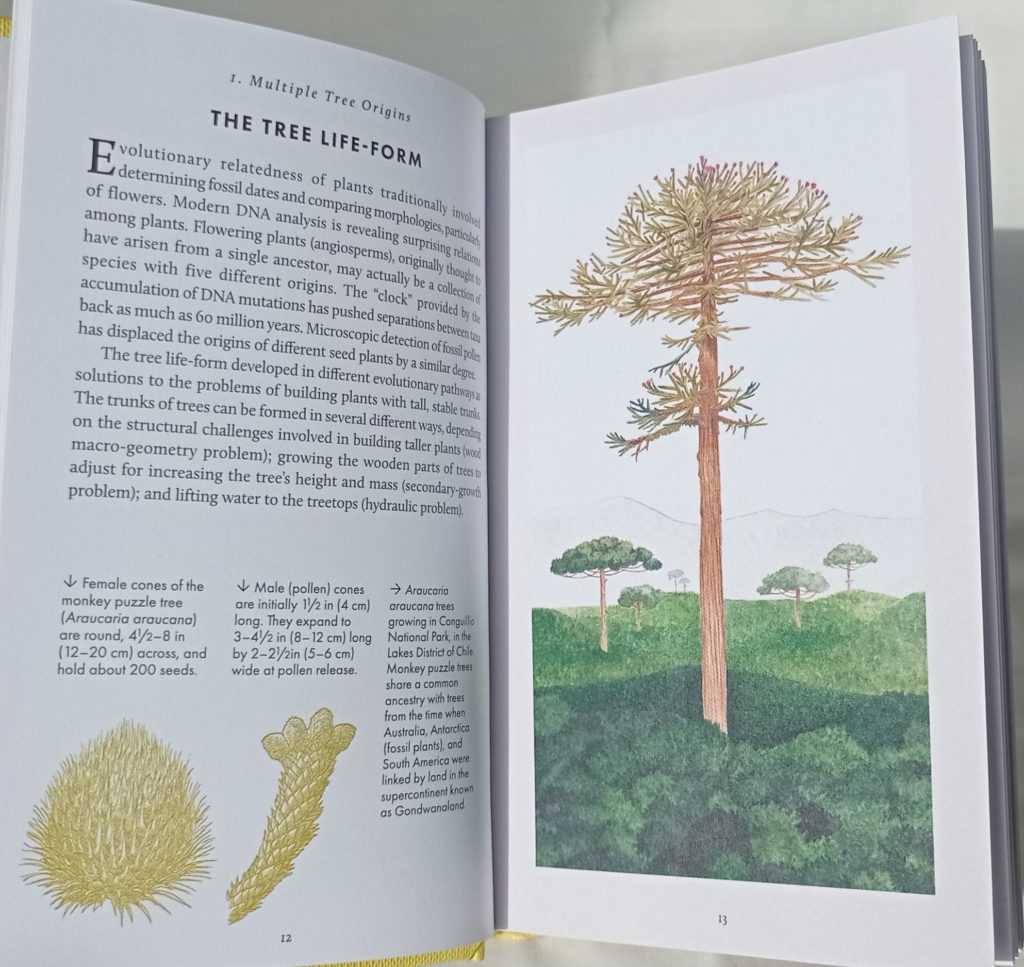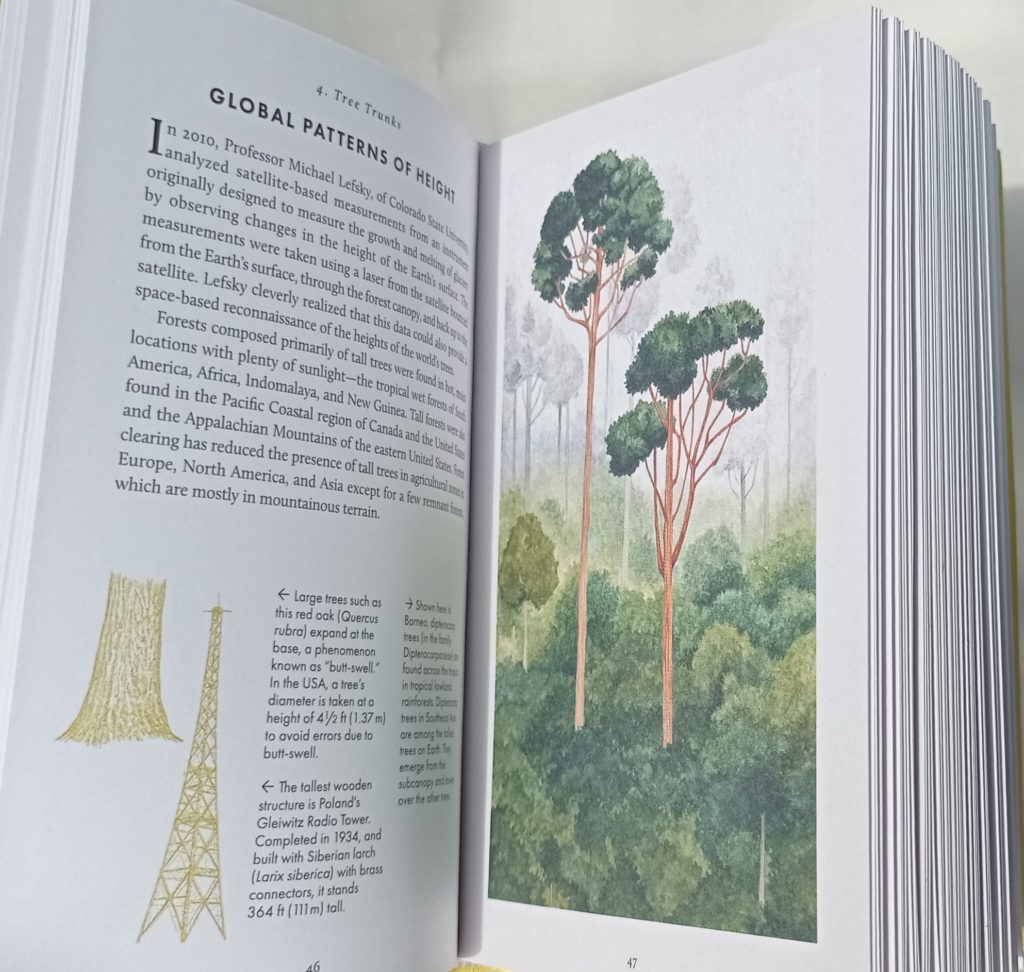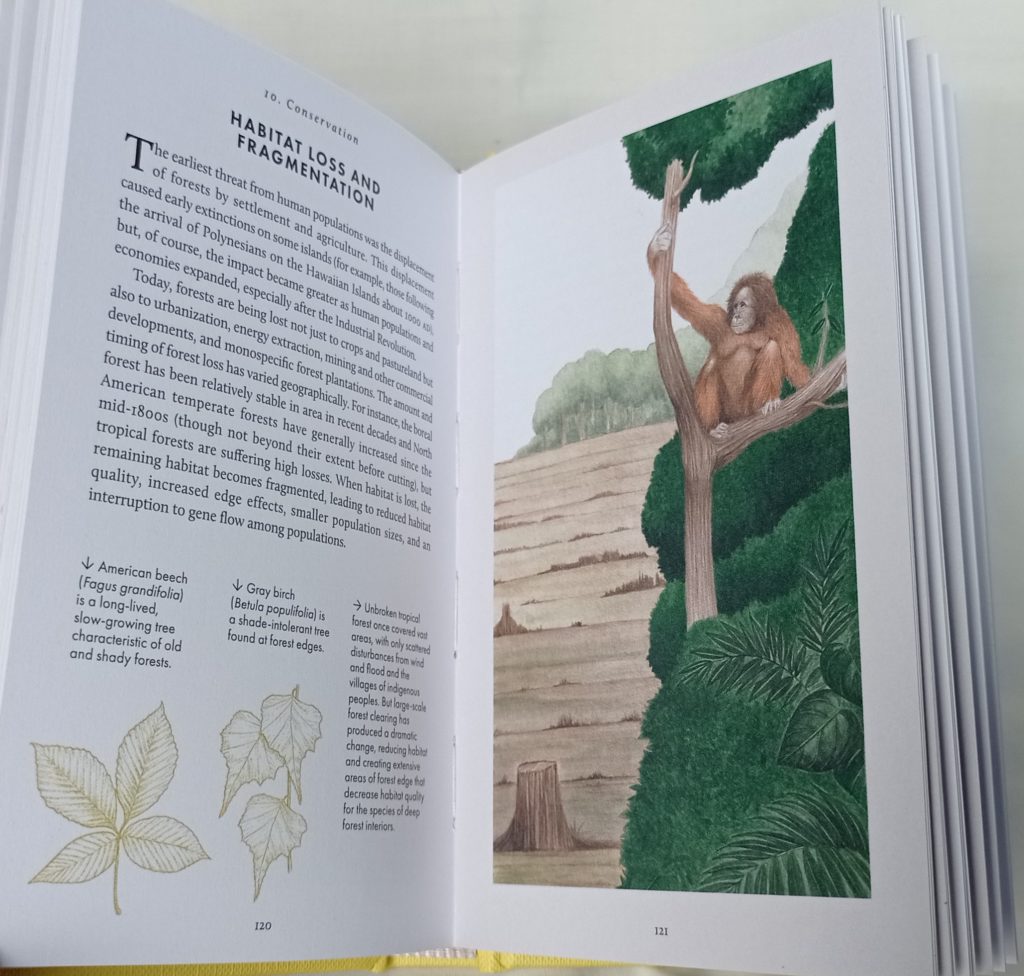
The Little Book of Trees
Herman Shugart and Peter White
Princeton University Press
Published 2nd April 2024
160 pages
ISBN 9780691251790
One of a new series of Little Books of Nature, The Little Book of Trees packs a lot of interesting information into a small book. Each chapter is split into short topics on a double-page spread, with explanatory diagrams, lovely artwork and photographs, making it very easily digestible. Starting with the origins of trees, the book covers tree diversity, ecology and conservation in addition to how the individual parts of a tree work and how they are adapted to different conditions.
Chapter 1 kicks off with some surprising facts about the evolutionary relationships between trees and other plants, for example that the nearest relative of large plane trees is the aquatic sacred lotus plant. The uneven distribution with latitude of our estimated 73,000 tree species is nicely demonstrated by there being more species in one square kilometre in Borneo than in the whole temperate forest zone. The chapter on Tree Diversity also covers the division of earth’s ecosystems into biomes based on relative precipitation and temperature, and how continental drift, changes in climate and glaciation have resulted in the apparently anomalous distribution of some trees. Magnolias, for example, became restricted to the widely-separated regions of eastern North America and East Asia.
The chapter on Tree Leaves includes a consideration of how the increasing levels of atmospheric carbon dioxide and global temperature may affect the fine balance between photosynthesis and respiration rates in trees. The following chapter on Tree Trunks discusses the trade-offs that are made between wood strength and growth rate, combined with the need to efficiently conduct water from the roots to the leaves. The different strategies used by Californian coast redwoods and Australian mountain ash to become exceptionally tall trees in similar climates are compared.
The effect of light levels on leaf properties, the layering of the canopy and the geometry of trees is explained in The Architecture of Trees chapter, including how the tall narrow spires of black spruce are best suited to capturing the flat sunlight at high latitudes. Tree Bark covers the large variation in bark properties and adaptation to different environmental conditions, in particular fire, as exemplified by the eucalypts and cork oak, the latter providing a very useful product. In the chapter on often overlooked Tree Roots, their high energy demands came as a surprise, as well as the soil acidity caused by released carbon dioxide. The resulting rock weathering has contributed to global ecological changes. The role of nitrogen-fixing bacteria is also covered, including how trees with these bacterial associations can be used to regenerate degraded land and provide high nutrient foliage for browsing herbivores.
The wonders of tree seeds are described in chapter 8, including the massive range in seed size (15 million-fold difference) and seed number produced by different species. The early seed production of ‘live fast, die young’ trees such as the devil’s walking stick is compared with much later reproduction in species such as beech. The Ecology and Forest Dynamics chapter considers landscape effects such as ‘fir waves’, white bands of dead conifers seen in mountainous forests in the US and Japan. Possibly the most important chapter, Conservation highlights the role of trophic cascades, produced for example by the loss of large predators, and the exacerbating effects of human activity on natural disturbances such as fire and flood. It concludes with the need for more holistic ecosystem management.
The final two chapters on Myths and Folklore and Curious Facts provide some light relief and interesting history, for example on the deep cultural knowledge of different societies about wood properties for making boats, longbows and didgeridoos. The stories of bio-piracy involving Chinese silkworm moths and white mulberry in the 6th century and Brazilian rubber trees in the 19th would make interesting books of their own. Fire adaptations crop up again, specifically the strategy of accumulating resin-sealed cones in a canopy seed bank, ready to be released en masse after a fire. The book ends with a brief look at the large topic of tree defences against herbivores, including the ability to recruit enemies of their enemies to assist in the fight.
Written by two Emeritus Professors of ecology at US universities, the book naturally has a North American slant, with many of the tree species likely to be unfamiliar to lay readers in the UK. However the described principles of tree biology and forest science are internationally-applicable, and it was fascinating to learn more about exotic species and to consider trees from a global perspective. The tone varies somewhat between chapters, with some being more academic than others, but it all remains very accessible. When read cover-to-cover, some information is repeated, but this may be needed to cater for readers dipping in and out of chapters.
Other titles in the series include Little Books of Beetles, Spiders and Butterflies, with volumes on Fungi, Weather, Dinosaurs and Whales to come. For lovers of natural history books, it will be very tempting to collect them all.




